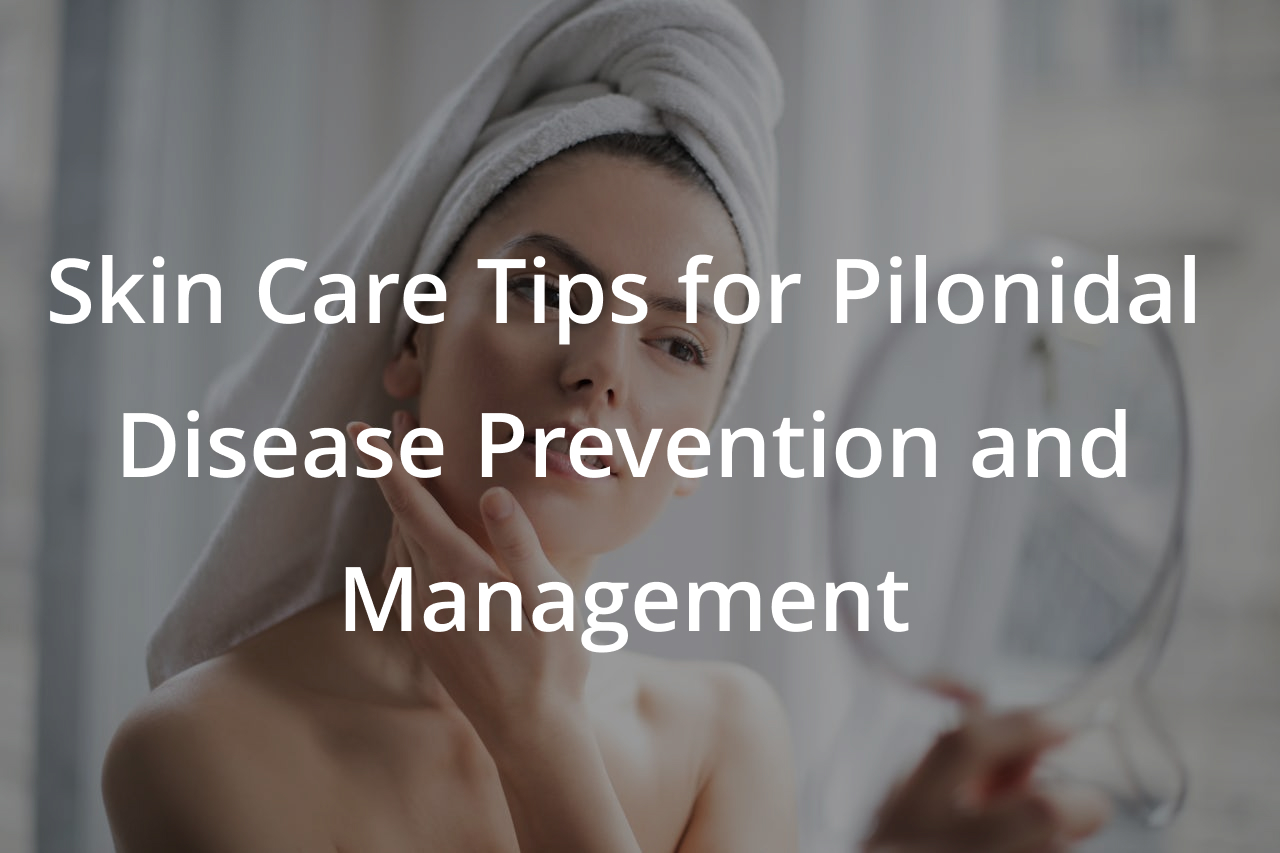Jun 04,2024
Skin Care Tips for Pilonidal Disease Prevention and Management
Pilonidal disease, characterized by the development of cysts near the tailbone, can be a painful and recurrent issue, significantly impacting quality of life. Effective skincare routines and practices play a crucial role in preventing flare-ups and managing disease symptoms. Under the expert guidance of Dr. Som at Pilonidal Treatments, patients are equipped with the knowledge and tools necessary to take proactive steps in caring for their skin to minimize the risk of pilonidal disease. This blog provides detailed guidance on skin care routines that can help prevent pilonidal disease flare-ups and manage symptoms effectively.
Understanding Pilonidal Disease
Before discussing skin care tips, it’s essential to understand that pilonidal disease typically occurs when hair punctures the skin and becomes embedded. If the area is not kept clean and dry, infection can set in, leading to the formation of painful cysts. Factors that increase risk include excessive sitting, poor hygiene, and a sedentary lifestyle.
Essential Skin Care Tips for Prevention and Management
Maintain Cleanliness:
- Regular Washing: Wash the area around the tailbone daily with a gentle, antibacterial soap. This reduces the risk of bacteria buildup that can lead to infections.
- Hair Removal: Since pilonidal cysts often form around ingrown hairs, consider safe hair removal options like shaving or using hair removal creams specifically designed for sensitive areas. It’s crucial to be extremely gentle to avoid skin irritation or cuts.
Ensure Dryness:
- Dry Thoroughly: After bathing or cleaning the area, ensure it is thoroughly dried. Moisture can exacerbate the condition and lead to infections. Use a clean, dry towel and pat the area gently.
- Use Absorbent Powders: If moisture is a recurrent problem, especially during exercise or in hot weather, consider using talc-free powders to keep skin dry without clogging pores.
Wear Appropriate Clothing:
- Avoid Tight Clothing: Tight clothing can irritate the pilonidal area and trap hair and sweat against the skin, increasing the risk of cyst formation. Opt for loose, breathable fabrics to reduce friction and improve air circulation.
- Change Clothes Regularly: If you’re active or sweat a lot, change your clothing more frequently to keep the area dry and clean.
Use Proper Seating:
- Ergonomic Seating: If you have a sedentary job requiring long sitting periods, invest in a cushioned or ergonomic seat designed to reduce pressure on the tailbone area. This can help prevent hair from being forced back into the skin, a common cause of pilonidal cysts.
Adopt a Healthy Lifestyle:
- Regular Exercise: Regular, moderate exercise helps improve blood circulation, which is beneficial for skin health and can aid in preventing infections.
- Balanced Diet: A diet rich in vitamins and minerals can improve skin health. Focus on consuming plenty of fruits, vegetables, and lean proteins to support your body’s natural defenses.
Symptom Management
If you are experiencing symptoms of pilonidal disease, such as pain or swelling at the base of the spine, these additional tips can help manage your condition:
- Warm Compresses: Warm compresses to the affected area can help soothe pain and reduce swelling. Ensure the compress is not too hot and is applied with a clean cloth to avoid any risk of infection.
- Over-the-Counter Pain Relief: Non-prescription pain relievers can help manage discomfort associated with pilonidal cysts. Always consult with your healthcare provider before starting any new medication.
- Monitor the Area: Regularly inspect the area for any signs of infection, such as increased redness, swelling, or pus. Early detection and treatment are key to effectively managing pilonidal disease.
Conclusion
Preventing and managing pilonidal disease involves a combination of good hygiene, proper skin care, and lifestyle adjustments. By following the tips outlined above, individuals can significantly reduce their risk of developing pilonidal cysts and manage any existing symptoms more effectively. Dr. Som is committed to providing patients with comprehensive care tailored to their unique needs. If you’re struggling with pilonidal disease or have concerns about your skin health in this area, contact us for professional advice and support.
